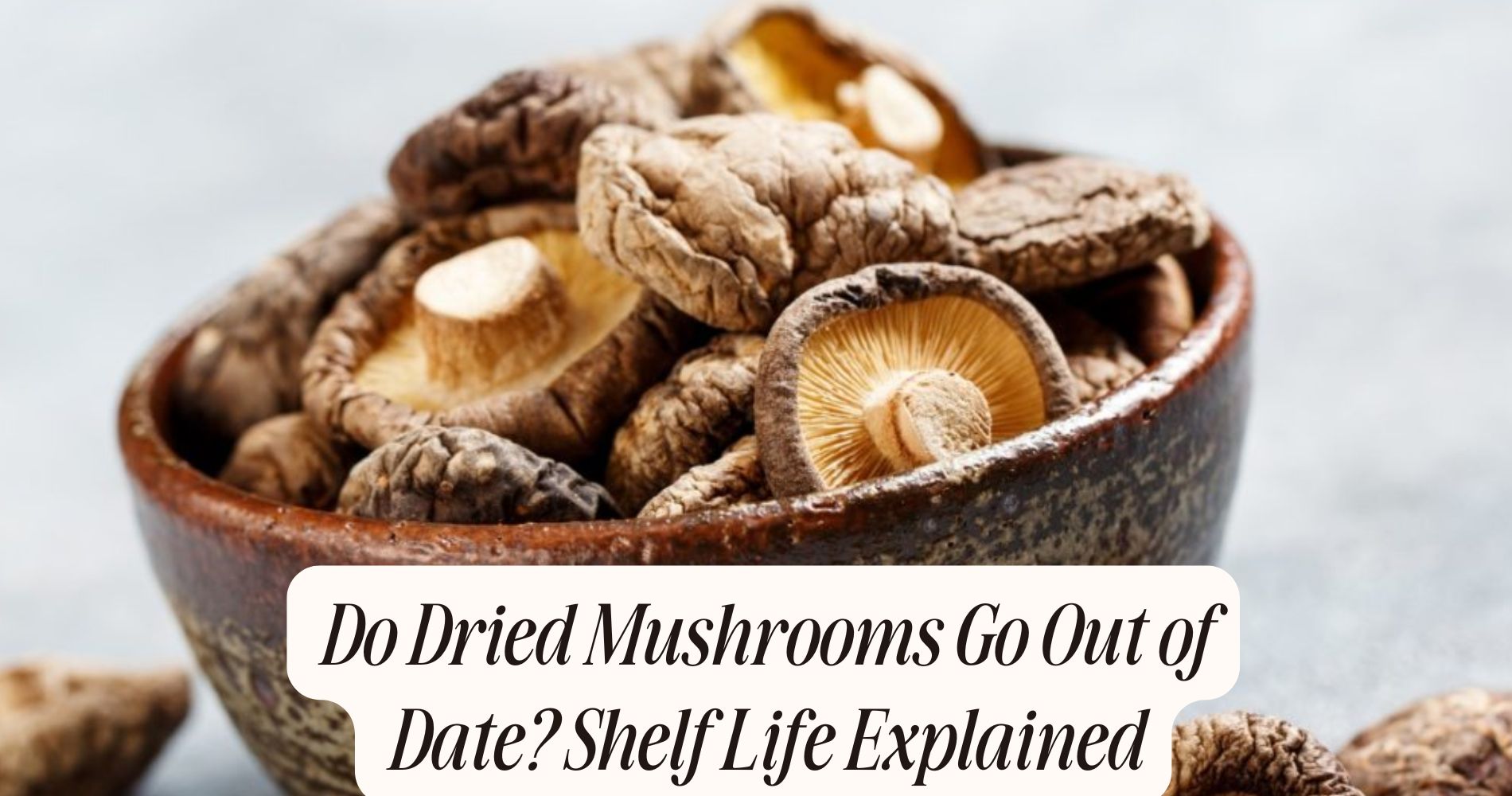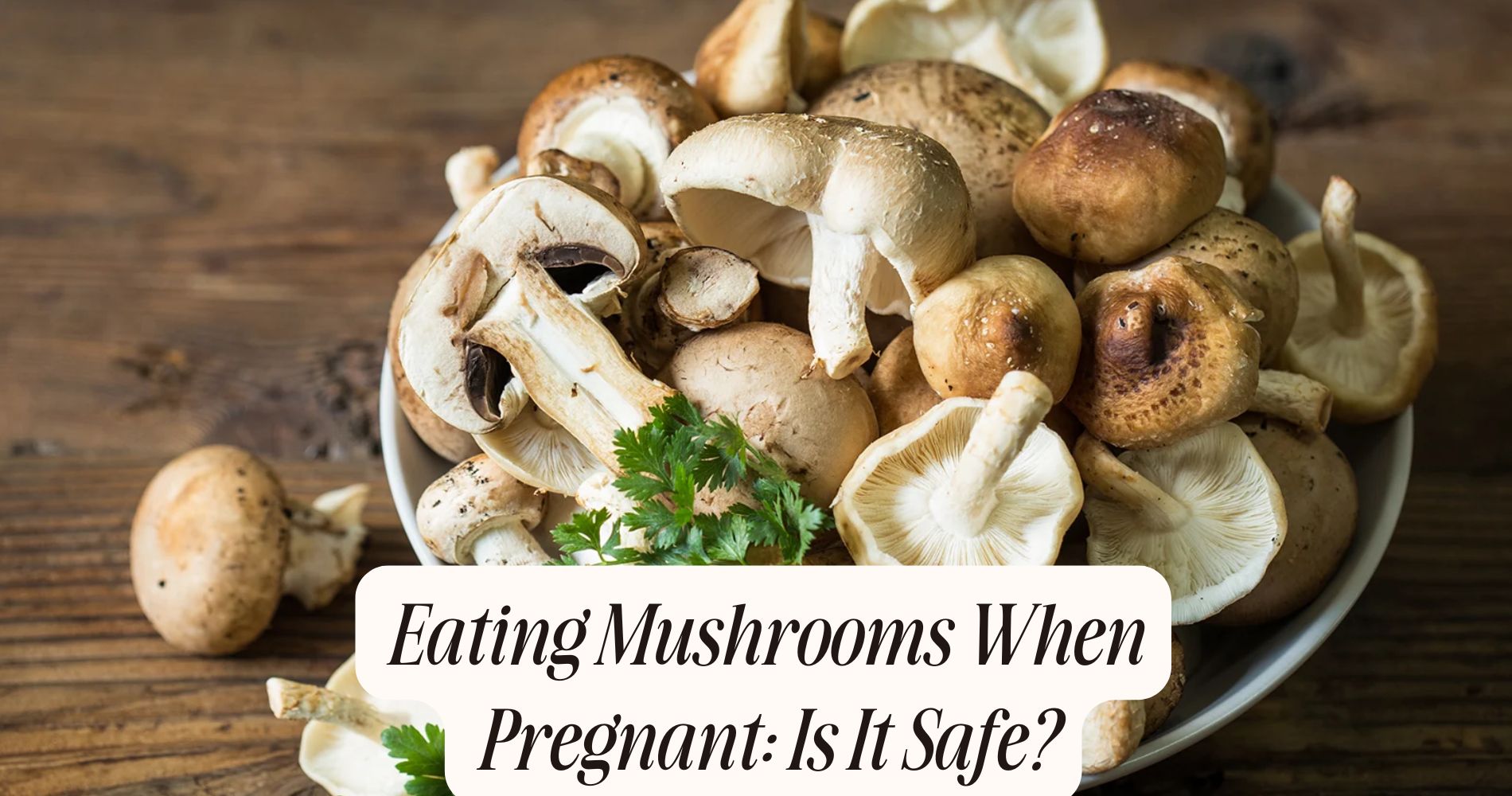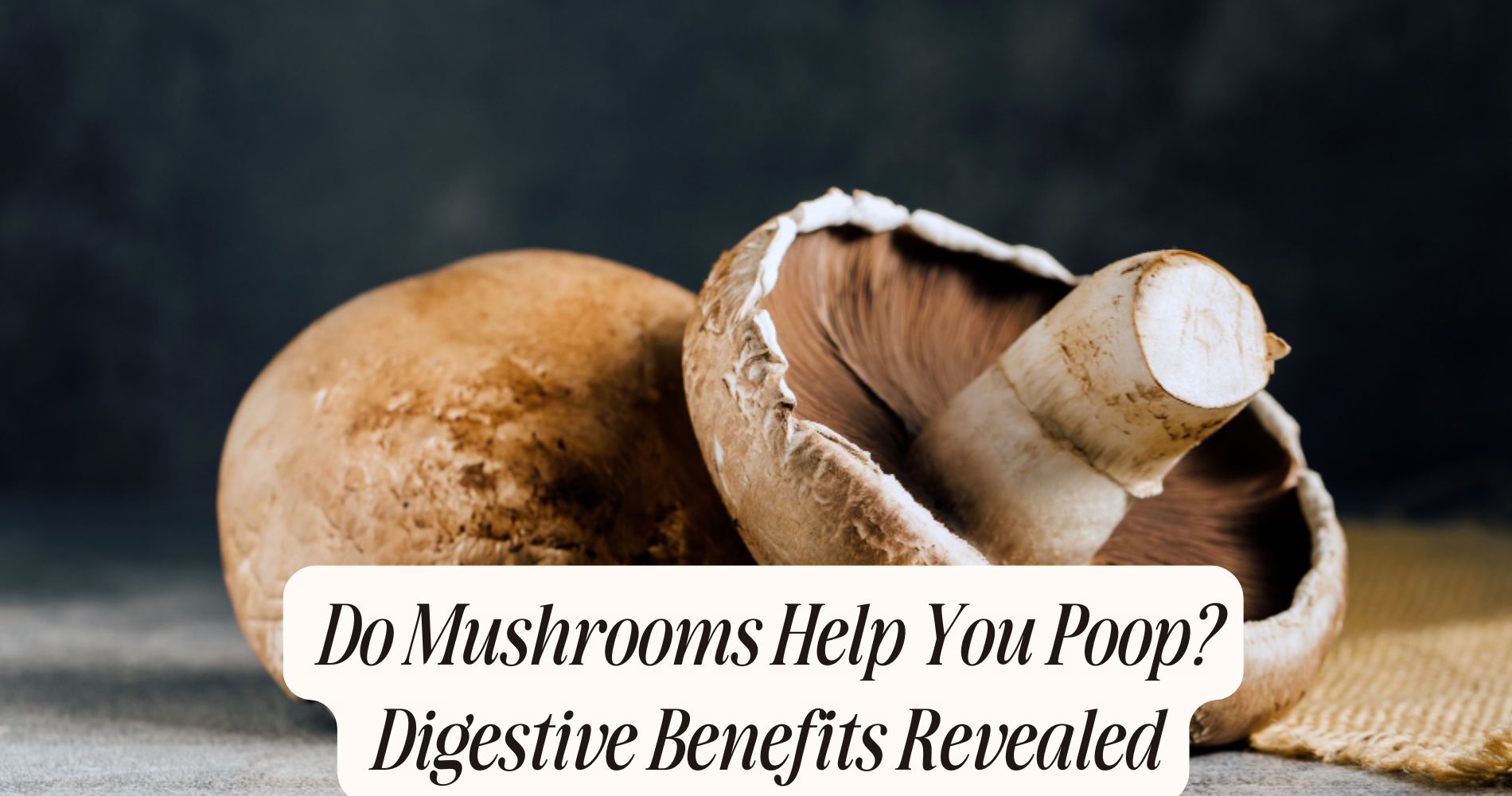
Do Dried Mushrooms Go Out of Date? Shelf Life Explained
Do dried mushrooms go out of date? Dried mushrooms typically have a shelf life of one to three years when stored properly. Their longevity depends on the type of mushroom and how well they were dried. To maximize shelf life, store them in airtight containers in cool, dark places with low humidity. Always check for spoilage signs, such as off odors or discoloration, before use. To learn more about storage techniques and culinary uses for dried mushrooms, keep exploring this topic.
Understanding Shelf Life of Dried Mushrooms
When you consider the shelf life of dried mushrooms, it’s essential to understand several factors that influence their longevity.
The type of mushroom plays a significant role; varieties like porcini or shiitake tend to last longer due to their dense structure and lower moisture content.

Additionally, the method of drying impacts both the nutritional benefits and culinary uses. Properly dried mushrooms retain essential vitamins and minerals, enhancing their flavor and health properties.
However, exposure to light, heat, and humidity can degrade quality over time.
Generally, you can expect dried mushrooms to last from one to three years if stored correctly. Recognizing these factors helps you maximize both the deliciousness and nutritional value of your dried mushroom inventory.
Proper Storage Techniques
To maximize the shelf life of your dried mushrooms, it's essential to understand proper storage techniques.
You should keep them in an airtight container to prevent moisture exposure, which can lead to spoilage.
Additionally, storing them in a cool, dark place will help maintain their quality and flavor over time.
Ideal Storage Conditions
Proper storage techniques are essential for maximizing the shelf life of dried mushrooms, as even minor missteps can lead to deterioration in quality.
To maintain their freshness, you'll want to focus on ideal humidity and temperature control. Store your dried mushrooms in a cool, dark place, preferably around 60°F (15°C). Excessive heat can cause them to lose flavor and texture, while high humidity can promote mold growth.
Aim for humidity levels below 15% to guarantee optimal preservation. Avoid areas near stovetops or dishwashers, where temperature fluctuations are common.
Airtight Container Usage
Using airtight containers is essential for preserving the quality of dried mushrooms. Various container types, such as glass jars, vacuum-sealed bags, or plastic containers, can be effective.
Glass jars are especially beneficial, as they’re impermeable and allow you to see the contents easily. When choosing sealing methods, consider vacuum sealing to remove excess air, which minimizes oxidation. Alternatively, tightly sealing the lids on jars can also prevent air infiltration.

Verify the containers are clean and dry before use, as this enhances their effectiveness. By implementing these storage techniques, you’ll maintain the flavor and texture of your dried mushrooms, prolonging their shelf life and ensuring they’re ready for your culinary creations whenever you need them.
Avoiding Moisture Exposure
Although dried mushrooms are shelf-stable, they can easily absorb moisture from the environment, leading to spoilage or mildew.
To guarantee proper moisture control, store your dried mushrooms in a cool, dark place with low humidity levels. Using airtight containers is crucial, as they prevent moisture ingress while keeping the mushrooms fresh.
Silica gel packets can also be added to absorb any excess moisture, further protecting your mushrooms. Avoid storing them in areas with fluctuating temperatures or near appliances that generate heat and humidity.
Regularly check your storage environment to maintain ideal conditions, guaranteeing your dried mushrooms remain flavorful and safe to use for extended periods.
Signs of Spoilage in Dried Mushrooms
When evaluating dried mushrooms, you should look for visual appearance changes, such as discoloration or mold.
An unpleasant odor can also indicate spoilage, suggesting that the mushrooms are no longer safe to consume.
Additionally, pay attention to any alterations in texture and consistency, as these can further signal that your dried mushrooms have gone bad.
Visual Appearance Changes
The visual appearance of dried mushrooms can reveal essential signs of spoilage that are important to recognize for safe consumption.
First, check for deviations from established visual standards; healthy dried mushrooms should exhibit a consistent color and texture. If you notice dark spots or a significant color change—like a shift from vibrant shades to dull or faded hues—this could indicate spoilage.
Additionally, if the mushrooms appear overly shriveled or have a powdery surface, they may have lost their quality. It's important to differentiate between the natural variations in mushroom colors and those that signal deterioration.
Always trust your eyes; if the visual indicators raise doubts, it’s safer to discard the product rather than risk consuming spoiled mushrooms.
Unpleasant Odor Emission
If you notice an unpleasant odor emanating from your dried mushrooms, it's a strong indicator of spoilage that shouldn't be ignored.
Odor sources can range from mold growth to bacterial contamination, both of which compromise the quality and safety of the mushrooms. A musty or rancid smell often signifies that your mushrooms have exceeded their shelf life.
These spoilage indicators can arise from improper storage conditions, such as exposure to moisture or air. If you detect any off-putting scent, it’s best to discard the mushrooms to avoid potential health risks.

Trust your senses; a foul odor is a clear sign that the mushrooms have deteriorated and are no longer suitable for consumption. Always prioritize food safety.
Texture and Consistency Alterations
Although dried mushrooms can maintain their quality for extended periods, alterations in texture and consistency often signal spoilage. You should be on the lookout for texture changes, such as a shriveled or overly brittle feel.
Freshly dried mushrooms should retain a firm yet pliable quality; any significant hardening or crumbling indicates they've passed their prime. Consistency issues can also arise, presenting as an unusual stickiness or excessive moisture when rehydrated.
If they feel slimy or have a gummy texture upon cooking, discard them immediately. These changes not only affect the mushrooms' quality but can also pose health risks.
Regularly checking your dried mushrooms for these signs will help guarantee you're consuming safe and flavorful ingredients.
How to Extend the Longevity of Dried Mushrooms
To guarantee your dried mushrooms maintain their quality over time, implementing proper storage techniques is essential.
Store them in a cool, dark, and dry place, ideally in airtight containers to prevent moisture absorption. Vacuum-sealing can further extend their shelf life.
When you want to use them, employ effective rehydration techniques to restore their texture and flavor. Soaking in warm water or broth not only rehydrates them but also enhances their flavor, making them more appealing in your dishes.
Regularly check for any signs of spoilage, such as off odors or discoloration.
Cooking With Dried Mushrooms: Best Practices
When you cook with dried mushrooms, understanding the best practices can greatly elevate your dishes. Start by rehydrating them in warm water for 20 to 30 minutes. This not only softens the mushrooms but also releases their concentrated flavors into the liquid, which you can use as a broth for added depth in your dried mushroom recipes.

Chop the mushrooms into uniform pieces to guarantee even cooking. When sautéing, add them after the initial vegetables to maximize their flavor enhancement. Experiment with various types, like shiitake or porcini, as each brings unique taste profiles.
Finally, don’t discard the soaking liquid; it’s a treasure trove of umami that can enrich soups, sauces, and risottos.
Frequently Asked Questions About Dried Mushrooms
What should you know about dried mushrooms? First, they pack a punch regarding nutritional benefits; they're low in calories and rich in vitamins, minerals, and antioxidants. This makes them a healthy addition to your diet.
You might wonder about their culinary uses. Dried mushrooms are versatile; they can enhance soups, stews, and sauces with their robust flavors. To rehydrate, soak them in warm water for about 20-30 minutes before use.
Regarding shelf life, if stored properly in a cool, dark place, they can last for years. Yet, always check for signs of spoilage, such as off odors or unusual textures.
Understanding these aspects will help you maximize your culinary experience with dried mushrooms.
Enjoy Mushroom Benefits with SUPER MUSHROOM GUMMIES
Looking for a convenient way to enjoy the benefits of mushrooms without worrying about their shelf life? Well Gummies’ SUPER MUSHROOM GUMMIES are packed with 10 types of functional mushrooms, providing natural brain support, sharper focus, and immune health. These vegan gummies are a tasty, easy-to-use solution that delivers calmer energy without any jitters or crashes. With a fresh wild berry flavor, they taste just like your favorite candy, energizing you all day long. Keep your body and mind in balance with SUPER MUSHROOM GUMMIES!
Frequently Asked Questions
Can You Freeze Dried Mushrooms for Longer Storage?
You can freeze dried mushrooms for longer storage. Use proper freezing techniques, like sealing them in airtight storage containers, to maintain their flavor and texture. This method extends their usability beyond typical shelf life.
Are There Specific Dried Mushroom Types That Last Longer?
Certain dried mushrooms, like shiitake, offer impressive longevity due to their low moisture content, while porcini require careful preservation methods. Storing them in airtight containers can greatly extend their shelf life and maintain quality.
Do Dried Mushrooms Lose Flavor Over Time?
Yes, dried mushrooms can lose flavor intensity over time. If you store them improperly, like in warm or humid conditions, their taste diminishes faster. Proper storage helps maintain their rich flavors longer.
Can I Rehydrate Spoiled Dried Mushrooms?
You shouldn’t attempt to rehydrate spoiled mushrooms, as they can harbor harmful bacteria. Instead, focus on proper storage to maintain freshness and flavor. Always check for signs of spoilage before considering any rehydration methods.
How Do Dried Mushrooms Compare to Fresh Mushrooms in Terms of Shelf Life?
When comparing fresh vs dried mushrooms, dried ones last much longer due to lower moisture content. For ideal storage, keep dried mushrooms in a cool, dark place, sealed tightly to maintain freshness and flavor.
Conclusion
In summary, while dried mushrooms don’t have a strict expiration date, their quality can diminish over time. By understanding their shelf life and employing proper storage techniques, you can enjoy their rich flavors for longer. Watch for signs of spoilage, and take steps to extend their longevity. When cooking with dried mushrooms, remember to rehydrate them properly to release their full potential. With these practices, you can make the most out of your dried mushrooms in every dish.




